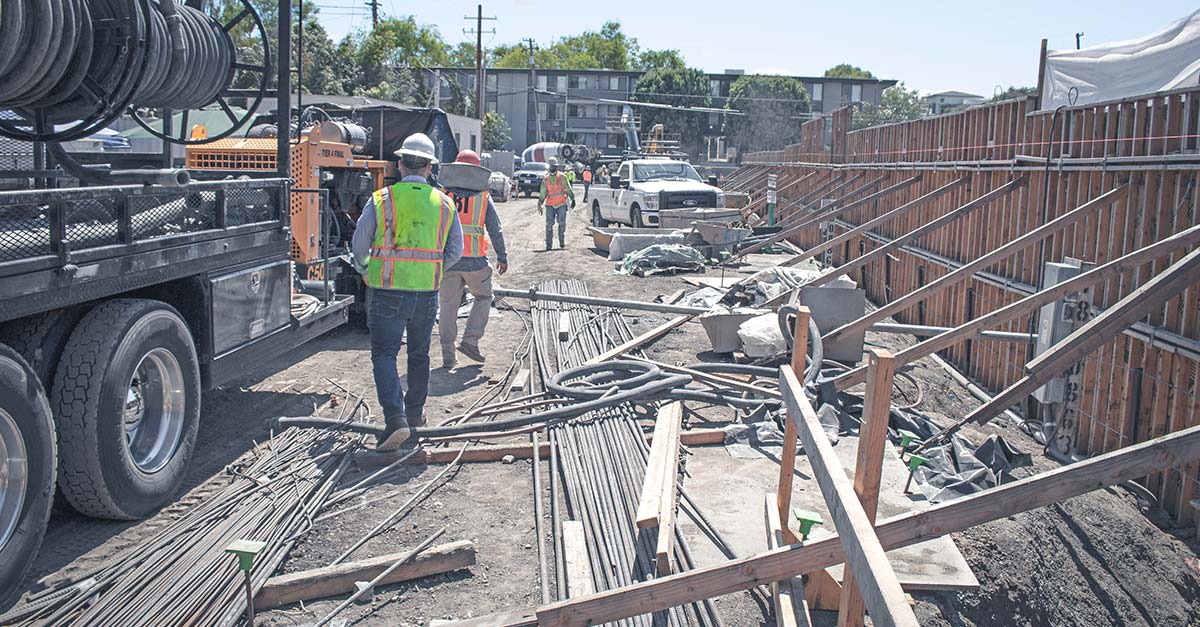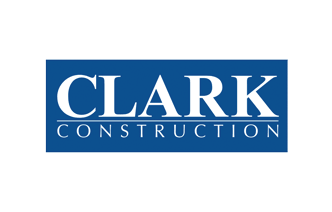What Construction Can Learn From Technology, According to Karl Sorensen

Karl Sorensen is the president of Blue Collar Labs. With 15-years in construction and $100M+ in project management experience, Karl now helps facilitate the development, financing, and growth of technology companies that specifically serve the AEC. For more information, contact him at ksorensen@bluecollarlabs.com.
The impact of new technology on inefficient markets is none more disruptive than when innovation touches the skilled labor industries. Whether it was Gutenberg and his printing press, Babbage and his programmable computing engine, or Henry and his assembly line, the power of converting manual craftsmanship into hands-free automation is not only groundbreaking, it’s heralded in history-books as revolutionary.
One industry, however, that remains strangely omitted from the annals of history is construction. Despite being the perennial leader of global economic performance, spending $11.4 trillion in 2018 and apace to reach a staggering $14 trillion by 2025 (Statista), construction remains one of the world’s last holdouts for efficiency. The built environment, often typified by its traditional thinking, wasteful practices and rejection of innovative ideas, as a whole, seemingly exists in a technological vacuum. As other industries are achieving new innovative heights with self-driving automobiles, virtual reality and artificial intelligence, surely, construction is next...
Or is it? If experience and history have anything say, notwithstanding major changes in culture, perspectives, and engagement strategies, the forecast is grim.
But why?
Recently, Chicago-based Blue Collar Labs conducted an investigative study to answer this question. Their goal, to uncover the challenges that prevent technology companies from effectively engaging construction companies and solutions for overcoming these obstacles. By initiating conversations with hundreds of tech companies and their founders, CEOs, and salespeople, the researchers behind Blue Collar Labs were able to gain new insights into the matter, which challenges traditional thinking and engagement methodologies.
An Open Letter to Construction by Karl Sorensen
From my 15 years in construction, I understand life on the construction frontlines. Starting off as a field laborer for a general contractor, working my way to project manager of a DoD contractor, and now as the operations director for an LA-based healthcare contractor, I have seen operational inefficiencies at every level, in every sector, and within every department. As my role over the years, becoming more hands-on in helping contractors understand and leverage new technology products, both with my own construction company and as a consultant via Blue Collar Labs, the bevvy of excuses I hear primarily places blame on technology vendors. But by conducting this research project and directly engaging with technology companies across the globe, we uncovered six sources of frustration, all directed towards us, their construction counterparts. Here is what we learned:
1. Contractors must be open to change
The industry perspective on “change” has become a tired and overused punchline at construction conferences and events. But honestly, have we taken a long-enough look at ourselves to seriously consider whether our organization (or its leadership) is falling prey to the fear of change? According to Blue Collar Labs’ findings, technology vendors adamantly claim that they are unable to engage us, their construction counterparts, because we’re vigorously opposed to change. Further still, these vendors go onto say that we’re fearful of the changes that new technology brings. When asked what was holding construction companies back from adopting new technology products, vendors roundly responded by citing the industry’s inability to being “open-minded to change.” One survey respondent conceded, “the most frustrating thing is when one person in the prospect company is super stoked about our product, but the deal collapses because someone else in the prospect company is so incredibly resistant to change.” Another stated, “be open to change…and how technology can make [the company] and their workers more valuable.” And lastly, “stop assuming that tech is too hard to adopt, just jump in and try it."
"[If you fail], fail fast but fail forward.”
Something to Consider: Is your organization truly open to change? Are you more fearful of the changes that new technology will bring or the consequences of not adopting new technology?
2. Make time for technology
Unsurprisingly, the second most consistently cited source of frustration was that we’re “too busy” to consider technology. Everybody seems to need technology but nobody has the time to talk with technology vendors. During the rare moments a successful connection is made, technology vendors often talked about being brushed-off, given the run-around or being passed from department to department, never getting clear direction. A noticeably exasperated respondent stated, “stop leading on salespeople and just be honest.”
Even when construction companies agree to purchase and adopt a new technology solution, the daunting and time-intensive task of implementation eventually erodes all enthusiasm. Nobody seems to have time to champion the new technology, ensuring that integrating it into existing systems is a success. As a result, and despite all initial excitement, technology implementation either stalls, is partially completed, or is never completed at all. Ultimately, this leaves both parties frustrated over the wasted time, energy, and money. One vendor said:
“[Stop being afraid] of the up-front effort with a technology product, especially with software.”
Something to Consider: If technology is a priority, make time for it. If it isn’t, than don’t. Either way, be clear with the technology vendors. Also, when budgeting for new technology, also budget the time for implementation and adoption.
3. Identify a strategy for evaluating, selecting, and implementing technology
Another theme that became apparent in this study is that many construction companies have very little self-awareness of their own inefficiencies, therefore, ill-equipped to properly evaluate, select, and implement the correct technology. Findings showed that technology companies repeatedly battled against a “lack of internal knowledge” or “no cohesive strategy” when engaging construction companies.
When construction companies don’t diagnose their own inefficiencies, there is a behavioral trend of choosing the popular tech products, not the correct tech products. One frustrated technology vendor stated, “stop buying the shiniest, most heavily-advertised, and generally overpriced construction software systems. You’ll overbuy, have an under-utilized system, and hemorrhage profits. Just solve the main problems with software specific to those problems”. Another respondent provided a similar response:
“Stop chasing shiny pennies without first establishing their goals and then working on their processes.”
It is incredibly important for companies to know and understand their own processes before they start considering digitizing them. At minimum, it is important that we clearly identify our goals, choose qualified decision-makers to be involved, and develop a baseline process for vetting through technology. This will save us the time, money, and frustration in the long-run
Something to Consider: In order to optimize our processes, we must first have a process in place (even if it’s paper-based). Attempting to throw technology at a non-existent (or poorly defined) processes will only result in creating a bad, organizational processes.
4. Nominate a technology decision-maker
Although this seems obvious and unremarkable, most construction companies never designate a decision-maker responsible for responding to and evaluating new technology opportunities. This is a simple adjustment we all should be willing to make. Regardless of company size or market sector, we each must identify a technology champion within our organization; not only to become a clear point-of-contact for outside technology vendors, but also championing internal technology decisions to the health and success of internal operations. The first and most-immediate benefit from having an on-staff, qualified, technology decision-maker is streamlined communication. A designated technology champion becomes a central figure with whom outside technology vendors can engage, preventing the rest of our organizations from feeling “spammed” by persistent outside salespeople. Additionally, this removes information silos commonly associated with construction organizations. A designated technology champion can field internal requests for technology adoption and implementation. Instead of project-by-project decisions made autonomously by project managers, a designated technology champion can make decisions that best serves the entire organization.

Something to Consider: Designate a construction technology champion (or team), willing and able to field inquiries from technology vendors, to lead discussions of technology within an organization, to make technology decisions on behalf of the company, and to constantly monitor the effectiveness of in-house digital solutions.
5. Realize there are no ‘silver-bullet’ products
A common misconception amongst construction companies is that technology products should solve our every organizational issue, the proverbial silver-bullet. As stated by one technology respondent, “don’t look for a perfect, one-stop solution.” And reinforced by another, “[stop] trying to get absolutely everything [you need] in one solution”. Certainly, there should be an expectation that technology products will automate and simplify specific processes within construction operations, however, it is ignorant to assume that any singular, technology product will satisfy every operational whim. Only after we successfully identify specific inefficiencies and goals are we then equipped to choose the right technology product. Specificity is key. Having vague metrics, general expectations, and ambiguous goals may lead us to purchasing a car just for the radio. Being specific will enable us to choose the right product for us, or if it fails, we know exactly why/how we failed. Eloquently stated by one technology vendor, “just solve the main problems with software specific to those problems”.
“[Stop] trying to get absolutely everything [you need] in one solution.”
Something to Consider: Assuming technology products will solve all spoken and unspoken operational deficiencies is unrealistic. Keep it simple. Identify specific organizational inefficiencies and goals, then find a technology product that meets your needs.
6. Treat technology vendors like partners, not adversaries
Lastly but importantly, it’s imperative that we partner with our construction technology counterparts, rather than treating them like predatorial opponents. They exist to make our construction businesses more efficient and profitable. In return, the majority ask for us to pay a subscription fee. It’s at this point, construction companies start treating technology vendors as adversaries. Of course, their technology isn’t free. Them requesting money from us for their innovative technology should not be a surprise, a deal-breaker, nor a reason for distrust. Conversely, what is the cost of not having their technology on our jobsites? Everyday, we run the risk of unforeseen variables and freak accidents; from unsafe jobsites and faulty work to overrun schedules and inefficient labor. In all reality, technology companies are saving us more than just money. They’re looking out for us. As such, they deserved to be treated like partners. One vendor stated, “look for vendors who will truly partner with you, and then let them truly partner with you.” By being open and honest with our inefficiencies, we’re inviting the opportunity for growth. Another technology vendor stated:
“Describe more about your organization and how it’s currently managed, so we can better formulate an idea of how we can help.”
Something to Consider: When construction companies begin looking at their relationships with tech vendors as partners, rather than adversaries, we will all start to discover unprecedented opportunities for efficiency.
Of course this doesn’t capture the breadth of the disconnects between construction and technology, but it’s a good starting-point. Not every company will need the latest technology, however, we should all be serious about efficiency, safety, and quality for all company stakeholders; employees, owners, clients, end-users, subcontractors, etc. Not only will this provide a superior end-product, but this will provide a better construction experience.

 Karl Sorensen •
Karl Sorensen • 
















